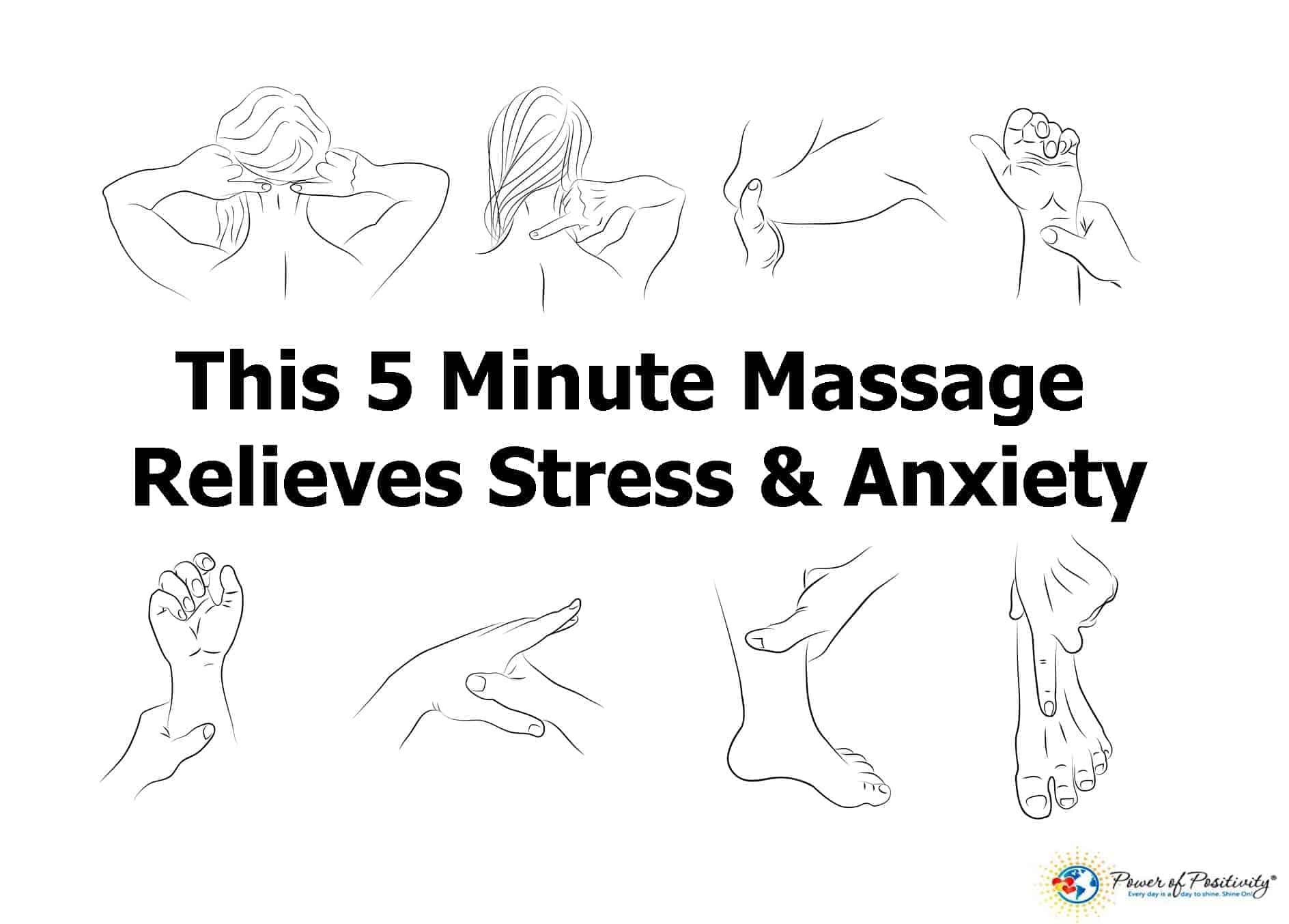Do you experiency stress and anxiety? Perhaps a massage could help you return to a place of calm and peace.
“You can pay me in back massages. That’s my kind of currency, and you’re in arrears.” – The article writer’s brother to his wife
Hopefully, this quote (which is true) got a few chuckles from our audience. We all may not agree on everything, but pretty much everyone agrees that massages are awesome. By the way, the brother’s wife often demands repayment in back massages as well.
On a more serious note, and from a wellness perspective, it is interesting that we are witness to a dramatic shift in modern medicine to more holistic approaches. This is particularly true with acupressure (not acupuncture, the use of needles to relieve pain), a practice that was developed over 50 centuries ago in Asia.
These techniques we’ll show here include many such acupressure techniques and are both effective and practical. The practices described are not only great for relieving emotional distress, but helps to relieve pain and tension, strengthen the immune system, and improve blood circulation.
Different types of holistic therapy, including massages, have even been reported to help one with past emotional traumas. For those seeking to improve their libido, massages are helpful in enhancing their sex drive.
Massages not only feel tremendous, but they’re useful in reducing stress – both in body and in mind. The techniques we’re going to discuss here are intended to help relieve stress and anxiety, two emotions that nearly everyone is familiar with. However, other techniques are also described that help alleviate a number of different ailments. This helps to segue into the next point of these exercises – to connect both body and mind.
The History of Massage for Anxiety and Other Concerns
Chinese practitioners, in addition to a number of others, believe in an inseparable mind and body connection. While the five techniques described have “different” purposes (affected areas of the body), the cumulative result is a notable improvement in mood, including the alleviation of stress, anxiety, tension and a host of other psychological and physical benefits.
In other words, when performing these exercises, try to focus more on overall well-being of body and mind rather than relief of “separate” ailments.
It is our sincere hope that the technique is useful and practical in our reader’s everyday lives.
Instructionally, to “apply pressure” indicates the use of fingers, thumb, palms, knuckles and sides of the hand. Ensure that when you apply pressure you are firm., but not so firm that you inflict pain.
When practicing the techniques described, apply pressure to noted areas over a three minute interval unless otherwise noted.
This 5 Minute Massage You Can Do Yourself Relieves Stress, Anxiety, and a Host of Other Health Issues
Technique 1 (for relief of nausea):
Locate the point of the arm three finger-lengths up from the forearm beginning at the wrist. In this spot, apply a firm amount of pressure by rotating the tip of the thumb for about 2 to 3 minutes.
Technique 2 (for relief of both stress and tension):
The next are is located in the webbed area of the hand, between the thumb and index finger. Using the opposite hand’s thumb and index finger, apply firm pressure on both sides of the webbing for about 2 to 3 minutes while deep breathing.
Technique 3 (for improved energy and alleviation of exhaustion):
In the shoulder well, also known as the trapezius area, apply firm pressure by “pinching” the area halfway between the shoulder and base of the neck. In Chinese medicine, it is believed that massaging this area help to improve Qi (energy) flow. Perform the motion for about 2 minutes and switch to the other side.
Technique 4 (for increased blood flow and relaxation):
In an area located approximately two finger-widths above where the arms meet the chest (around the rotator cuff area), apply firm pressure. This will help to increase blood flow and invoke feelings of relaxation.
Step 5 (for relief of insomnia, stiffness, and exhaustion):
The final area is located one finger-width below the base of the skull on either side of the spine. The best practice for applying firm pressure in this area is to wrap the fingers around the back of the skull and use the thumbs to apply pressure. Stimulate this area while taking deep breaths and closing the eyes. The massaging at this location is said to help with relieving exhaustion, stiffness and insomnia.



















